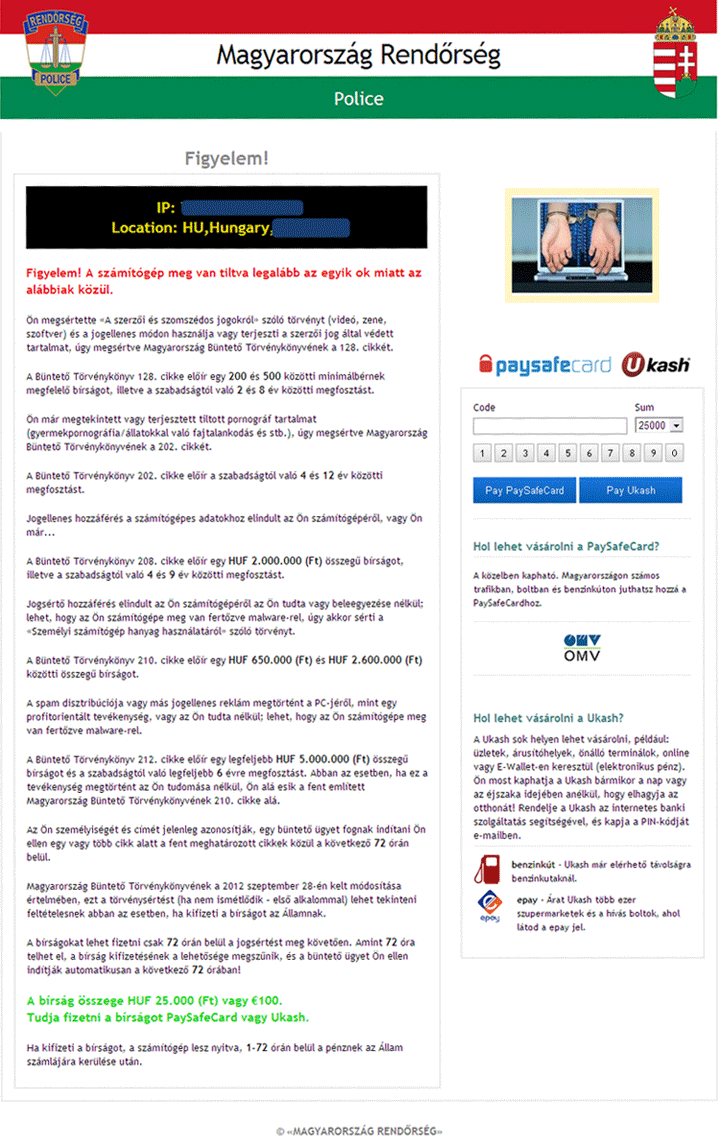Magyar Rendőrség Virus (Ransomware)

Magyar Rendőrség Virus (Ransomware) Image
ESG security researches have received reports of an increase in ransomware Trojan infections targeting countries in Eastern Europe. The Magyar Rendorség Virus is just one of many variants of the so-called Ukash Virus that have started to pop up in the Eastern Europe. In October of 2012 alone ESG malware researchers have observed versions of this threat targeting computer users in countries like Romania, Slovakia and Slovenia. The Magyar Rendorség Virus is the variant of these ransomware threats that infects computers with a Hungarian IP address. Like many ransomware Trojans, the Magyar Rendorség Virus displays a fake warning from the Hungarian police threatening the the computer user with jail time and heavy fines unless a fine of 20,000 HUF is paid using money transfer services such as Ukash or PaySafeCard.
Table of Contents
The Magyar Rendorség Virus is Used to Scam Inexperienced Computer Users
These kinds of fake messages from law enforcement have proven to be effective at scaring inexperienced computer users who are more likely to believe that their computer can be blocked by their country's police force. The Magyar Rendorség Virus blocks all access to the infected computer, displaying a full screen message written in Hungarian that claims that the infected computer was involved in illegal activity such as copyright violations and viewing illegal pornographic material. The Magyar Rendorség Virus also prevents the victim from gaining access to the Start Menu, the Task Manager and other Windows components that would allow victims to bypass this threat's irritating ransomware message. ESG security researchers strongly advise against paying the Magyar Rendorség Virus' ransom since it has been proven that paying this threat's ransom will do nothing to unblock the infected computer.
Dealing with a Magyar Rendorség Virus Infection
Most computer users will struggle to gain access to their security software on a computer infected with the Magyar Rendorség Virus. To bypass its threatening message in order to gain access to your security application, ESG security researchers advise either using an alternative boot method to start up Windows (such as starting up from an external memory device) or starting up Windows in Safe Mode and using the Command Prompt to gain access to your computer's security components. Once you gain access to your security software, most fully-updated anti-malware programs should be able to remove the Magyar Rend?rség Virus with few problems.



Submit Comment
Please DO NOT use this comment system for support or billing questions. For SpyHunter technical support requests, please contact our technical support team directly by opening a customer support ticket via your SpyHunter. For billing issues, please refer to our "Billing Questions or Problems?" page. For general inquiries (complaints, legal, press, marketing, copyright), visit our "Inquiries and Feedback" page.